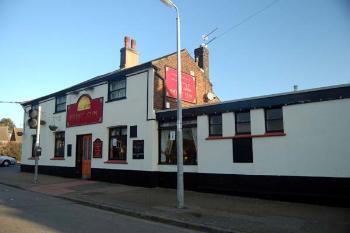The Manor of Caddington Major

Saint Paul’s Dean and Chapter
Caddington Major Manor was held by the Dean and Chapter of Saint Paul’s in London. The first volume printed by Bedfordshire Historical Record Society, in 1913, has an article by C. Gore Chambers on the lease of Caddington Manor. He describes the manor as follows: “There were thirty prebendaries of Saint Paul’s. Each of these had assigned to him a manor, as his prebend or provision, and of that, as long as he remained a prebendary, he became the freeholder … But the dean and some twelve or fifteen of the canons and prebendaries were residentiaries and performed duties in connection with the cathedral. These, and the establishment which served them, were supported by an income derived from those of the chapter manors which had been reserved and were not assigned to individual prebendaries. The lessees of such manors were generally some of the canons themselves and the rent was paid partly in money and partly in produce … In Domesday Book Caddington is said to be a ten-hide manor belonging to Saint Paul’s. But the hide, as there used, can only be regarded as a unit of assessment, and gives little help to calculation of area, the actual amount of land amounting to about 2,400 acres. Out of this estate the chapter carved three manors; two of them known as Caddington Major and Caddington Minor, both of them in Bedfordshire, were assigned to two prebendaries. The third, known as Caddington Manor, was in Hertfordshire, but is now in Bedfordshire; it was one of the manors reserved for the support of the cathedral establishment”.
Volume II of The Victoria County History for Bedfordshire was published in 1908. It has a brief history of the prebendal manor of Caddington Major. The first known Prebend to hold it was Askyllus or Anskyldus in 1103. In 1649 the chapter of Saint Paul’s was abolished by the Commonwealth and the manor sold to Richard Somers of London. On the restoration of Charles II (1660-1685) the chapter was restored and the manor was returned to it. In the 18th century it seems to have been known as Aston Bury. The manor house stood about a quarter of a mile east of the church but was pulled down about 1860 and a farmhouse called Prebendal Farm built on the site.
The dean and chapter of Saint Paul’s continued to hold the manor until 1872 when the Ecclesiastical Commissioners for the Church of England took it over. A succession of Law of Property Acts in the 1920s extinguished all manorial incidents, courts and copyhold tenure of land. This effectively abolished manors in all but name.





